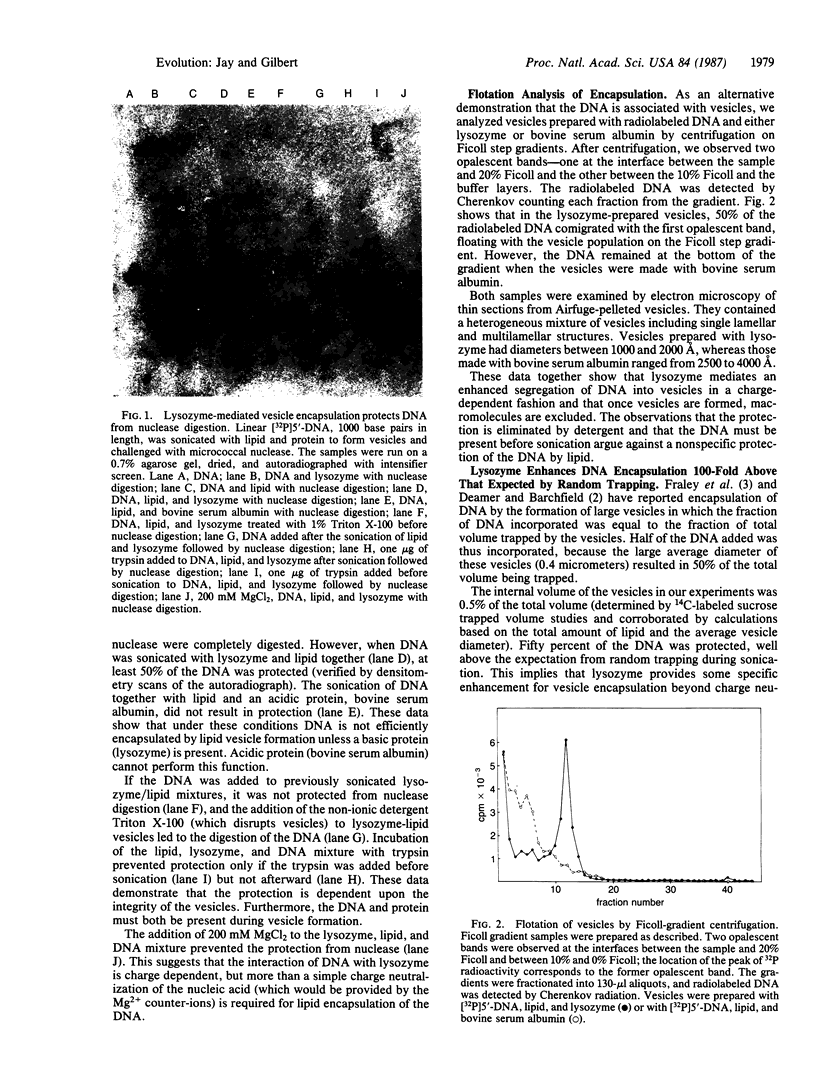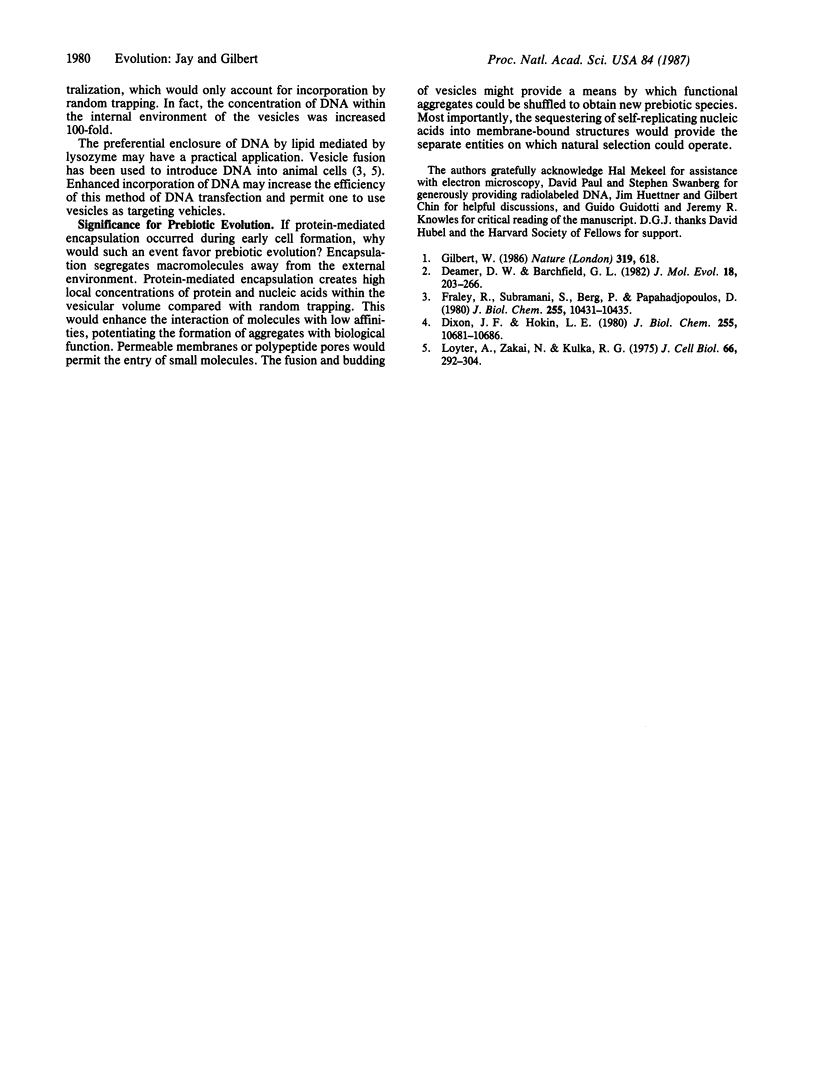Abstract
DNA can be encapsulated into lipid vesicles formed by sonication. The presence of a basic protein, lysozyme, enhances the incorporation 100-fold above the level expected by random trapping. This is demonstrated by the ability of the lipid vesicles to protect DNA from digestion with DNase. Such an enhancement of nuclei acid incorporation into vesicles by basic polypeptides and the sharply increased concentration of these macromolecules in the internal volume may have been advantageous in prebiotic evolution.
Full text
PDF


Images in this article
Selected References
These references are in PubMed. This may not be the complete list of references from this article.
- Deamer D. W., Barchfeld G. L. Encapsulation of macromolecules by lipid vesicles under simulated prebiotic conditions. J Mol Evol. 1982;18(3):203–206. doi: 10.1007/BF01733047. [DOI] [PubMed] [Google Scholar]
- Dixon J. F., Hokin L. E. The reconstituted (Na,K)-ATPase is electrogenic. J Biol Chem. 1980 Nov 25;255(22):10681–10686. [PubMed] [Google Scholar]
- Fraley R., Subramani S., Berg P., Papahadjopoulos D. Introduction of liposome-encapsulated SV40 DNA into cells. J Biol Chem. 1980 Nov 10;255(21):10431–10435. [PubMed] [Google Scholar]
- Loyter A., Zakai N., Kulka R. G. "Ultramicroinjection" of macromolecules or small particles into animal cells. A new technique based on virus-induced cell fusion. J Cell Biol. 1975 Aug;66(2):292–304. doi: 10.1083/jcb.66.2.292. [DOI] [PMC free article] [PubMed] [Google Scholar]



